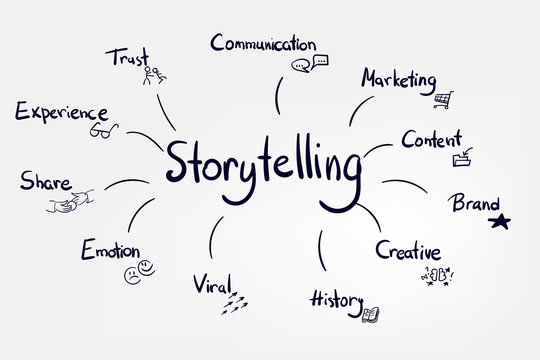Have you ever encountered someone who can captivate an audience with a fascinating story? It may have happened during a TED lecture, commencement speech, award presentation, or another formal event. It may have happened at a party, around a campfire, or on a radio show or podcast dedicated to sharing stories.
Are you wondering how these top-notch storytellers get associated with their audiences? Thankfully, we may draw guidance from others’ experiences to aid you along the road. Here are some wise suggestions from accomplished storytellers on managing artistic thinking and getting your audience hooked on your story. So, let’s get started!
1. Consider the motto of your story
After taking into account your audience, assess your objective. What message are you trying to get through to the audience? What do you want your audience to recall once you’ve captured their interest? Identify the main idea or message that you want to convey through your story. This could be something like motivation, love, loss, redemption, or growth. Think about how the story ends and how it relates to the theme. Does the ending provide a satisfying resolution to the theme, or does it leave the reader/listener with something to think about?
If your motto is to develop phonological awareness among students, you should devise the best strategy to keep children calm during the whole session.
2. Personalize it
Audiences are much more likely to connect with storytellers who make themselves a little exposed by sharing a little of their personal lives than those who share very little. It’s our instinct to be interested in other people’s life experiences. Are there specific events or moments that are particularly important for conveying the theme? Write from personal experience, this way you can bring a unique and authentic voice to your story.
3. Move outside of your safety zone
When striving to come up with fresh ideas, even the most seasoned storytellers could discover that they keep returning to the same rich territory. You will be expected to take a few chances if you intend to elevate your literary works and storytelling. You may create tales using multiple genres.
Each and everyone of us has a story, how can you make yours stand out and unique? Experiment with the structure of your story. Instead of following a traditional linear structure, try using non-linear or unconventional structures.
4. Utilize a hook to grab your audience’s attention
Ever heard a narrative that you weren’t necessarily aware was a story? You might be struggling to understand the story’s theme about midway through. This is what writers refer to as the story’s “hook.” What will interest the people in your audience? Is there any narrative having a strong hook? What will maintain their attention and engagement in the narrative?
Consider inventive ways to convey your knowledge so that your audience remains engaged. You may be sure that you’ll fascinate your audience using this storytelling style.
Some hooks to consider:
- An intriguing opening line: Start your story with a strong opening line that grabs the reader’s attention and makes them want to know more.
- A surprising or unexpected event: Introduce a surprising or unexpected event early on in your story to grab the reader’s attention and make them want to know what happens next.
- A strong character: Introduce a strong, relatable, and interesting character that the reader can invest in.
- A question: Pose an intriguing question that the reader wants to know the answer to, it could be a mystery, a problem, a riddle, a prophecy.
- A suspenseful or dramatic scene: Start your story with a suspenseful or dramatic scene that sets the tone for the rest of the story.
- A unique setting: Use an unusual or unique setting to capture the reader’s attention and make them want to know more about the story’s world.
- A metaphor or simile: Use a metaphor or simile to paint a vivid image in the reader’s mind and make them want to know more.
- A sense of urgency: Create a sense of urgency by introducing a problem, a ticking clock, a deadline, a countdown, a pursuit, a chase.
- A quote: Start your story with a quote that sets the tone and theme of the story and make the reader curious.
- An action: Start your story with an action that sets the tone and theme of the story, whether it’s a fight, a chase, a discovery, a breakthrough, an escape.
It’s important to note that a hook needs to be relevant to the story and not just be a trick or a gimmick. It should be part of the story and contribute to its development.
5. Balance your story’s key points as you go
You must be sure that each speech segment contains at least one key point if you’re delivering a nonfiction tale with a purpose. This retains the interest of your viewers. A top-notch storyteller will usually choose the two most important themes and use them as the bookends of their narrative.
Moreover, they will begin with an engaging tale to capture the audience’s attention and make sure the last thing they say will impact the audience long after the story has ended. They add more succinct substance between these two main plot elements, which makes the novel more effective overall.
The best qualities of a leading storyteller are they should motivate others, be confident, enthusiastic, energetic, and genuine, and don’t shy while creating a robust connection with others. So, there is always a chance to forge deeper relationships wherever you are in your storytelling path.


